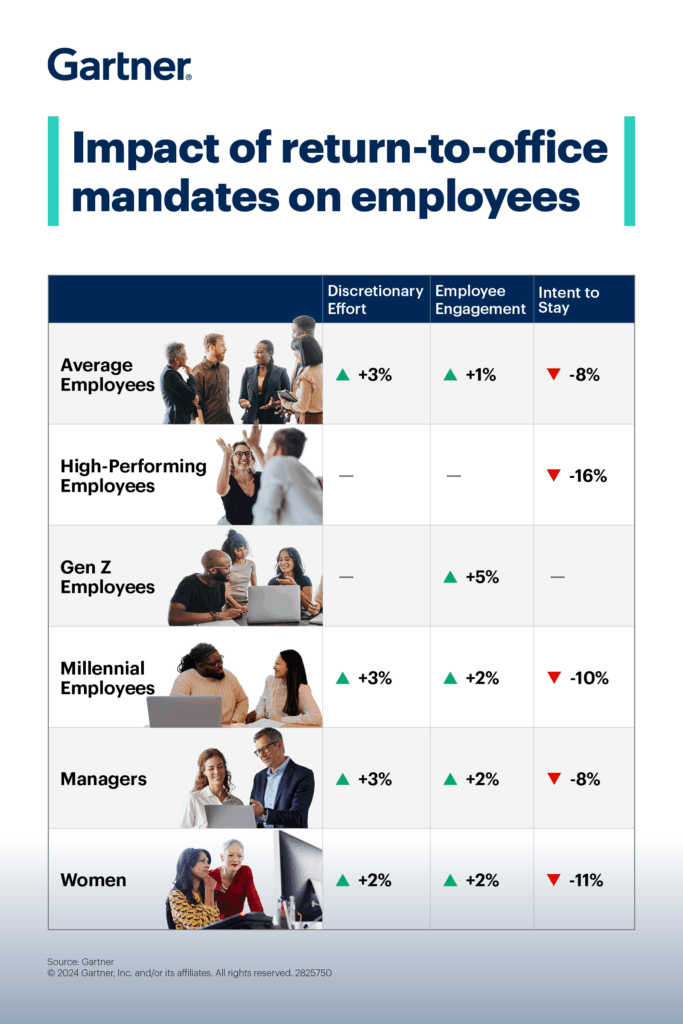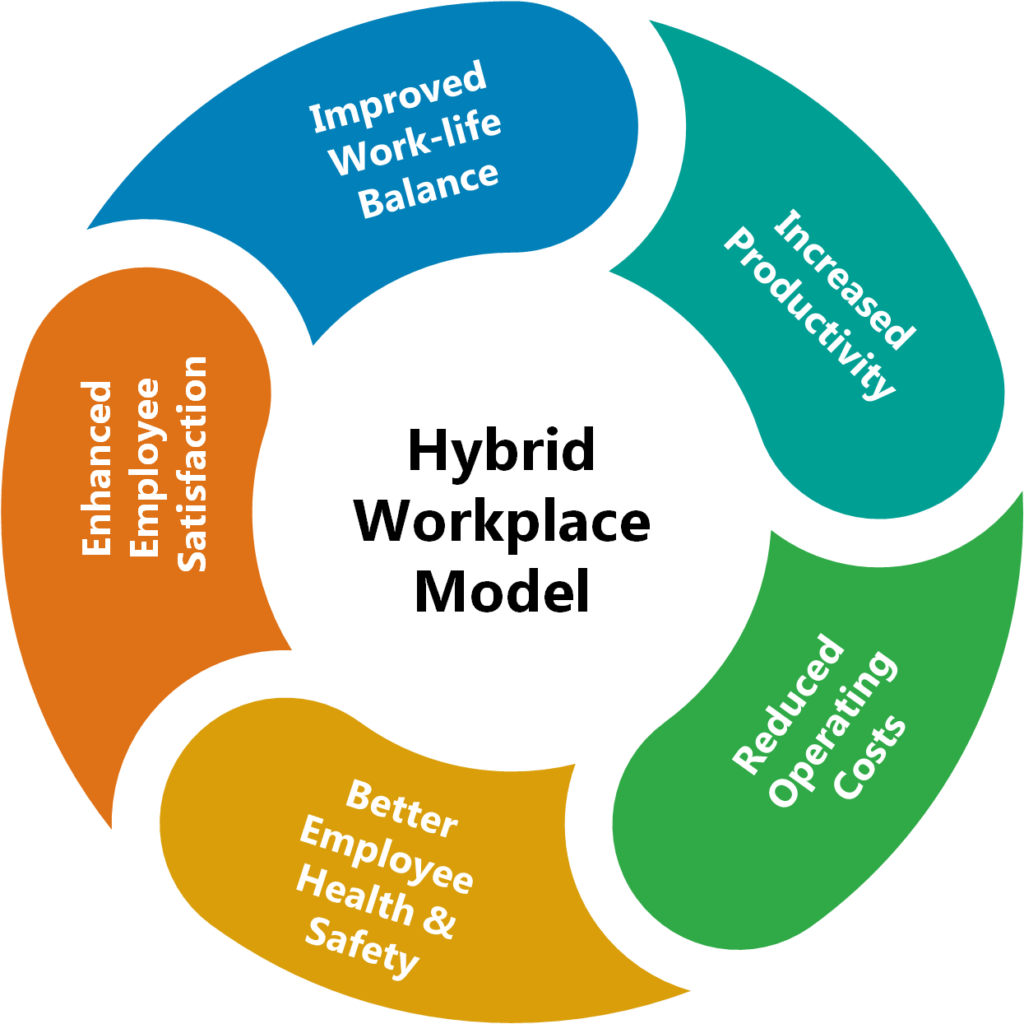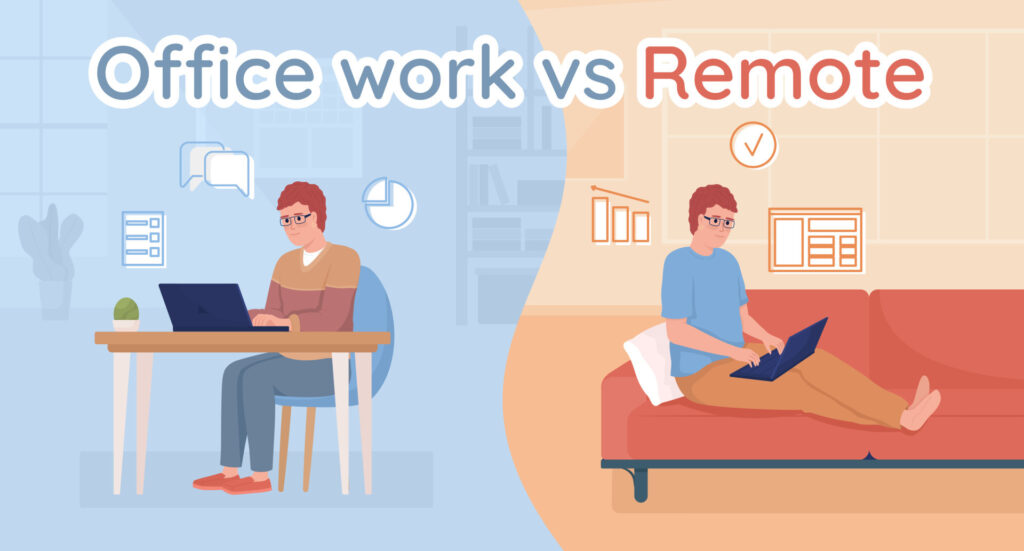
New Work Mandates Could Leave Millions Worse Off: In recent years, the workplace dynamics have been reshaped by a global shift to remote work. The COVID-19 pandemic accelerated this transformation, offering employees new flexibility and autonomy. However, now that the dust has settled, many companies are enforcing Return-to-Office (RTO) mandates, requiring workers to return to their physical offices. While this change is meant to restore in-person collaboration and improve company culture, it has led to growing concerns among employees and experts alike. Millions of workers may be significantly impacted, facing mental health challenges, career stagnation, and financial burdens.
Though RTO policies are designed with business productivity in mind, the implications for employees are far-reaching. From emotional distress to practical difficulties, experts warn that many workers may end up worse off. This article will provide a breakdown of the situation, discuss practical advice for both employees and employers, and offer actionable steps to navigate these new policies.
New Work Mandates Could Leave Millions Worse Off
RTO mandates present a complex challenge for both employees and businesses. While these policies may restore company culture and boost team collaboration, they also carry significant risks, such as employee disengagement, burnout, and higher turnover. For businesses, the key is finding a balanced approach that considers both operational needs and employee satisfaction. By offering flexibility and open communication, businesses can implement RTO policies that benefit everyone in the long term.
| Key Points | Details |
|---|---|
| RTO Mandates | Nearly 80% of CEOs plan to enforce full return to office. |
| Impact on Employees | Employees are voicing strong resistance. 73% of Amazon workers considering quitting. |
| Turnover and Retention | Companies with RTO mandates are seeing increased turnover, especially among skilled workers and women. |
| Mental Health Impact | Gallup research shows a decline in employee engagement—only 30% of workers feel connected to their company’s mission. |
| Logistical Challenges | Some companies face issues such as inadequate office space, desks, and parking. |
The Return-to-Office Trend: What’s Driving It?
With remote work now common, some employers are concerned that collaboration, creativity, and innovation are suffering without in-person interactions. According to reports, nearly 80% of CEOs are planning to implement full RTO policies over the next three years. In contrast, employees argue that these policies are unnecessary, especially when hybrid models (a mix of remote and in-office work) have proven effective for many companies.
Experts note that companies’ push for physical presence stems from a desire to restore corporate culture and promote team collaboration. While these intentions are understandable, they may come at the expense of employee satisfaction, engagement, and well-being. For businesses, the perceived loss of connection in virtual work environments raises questions about employee productivity and innovation.

Why the Pushback? What’s at Stake for Employees?
For workers, especially those who have enjoyed the flexibility of working from home, RTO policies can feel like a regression. The pushback is fierce, with employees citing long commutes, higher daycare costs, and loss of work-life balance as reasons for resisting the return. A survey conducted by The Hustle revealed that 73% of Amazon workers would consider quitting if forced to return to the office. Many employees have also raised concerns about the lack of mental health support and the unpredictable nature of in-office work.
On top of this, employees who have been able to set up their work-from-home routines now face the financial burden of commuting again. According to a report by the U.S. Bureau of Labor Statistics, the average commuting cost for a full-time worker is around $2,600 annually, which could add up to substantial expenses for workers.
The Mental Health Challenge
The emotional toll of RTO mandates is becoming evident. According to Gallup, only 30% of workers report feeling connected to their company’s mission and goals, a sharp decline from previous years. Hybrid workers, who split their time between home and the office, report greater satisfaction than fully remote employees, who struggle to build connections with their employers. Mental distance from colleagues and leadership has created a barrier, leading to burnout, stress, and even anxiety for many.
Moreover, the shift back to in-office work can have profound effects on the well-being of employees, particularly those already grappling with workplace anxiety and social isolation. In some cases, the added pressure of re-entering an office environment may lead to worsened symptoms for those who have adjusted to the remote work routine. Experts caution that companies should be mindful of these impacts and create supportive, flexible environments that accommodate employees’ mental health needs.
The Business Perspective: Why RTO May Be Necessary
Despite the widespread resistance, companies argue that RTO policies are essential to improving company culture and boosting team morale. For certain industries—like consulting, design, and tech—the lack of in-person collaboration can be detrimental to productivity. Companies argue that face-to-face interactions allow for spontaneous brainstorming, which can spark creativity and help solve problems faster. Moreover, some businesses believe that returning to the office helps re-establish a shared vision among employees and fosters a stronger corporate identity.
However, businesses also face the challenge of balancing operational needs with employee satisfaction. The task is not easy, and without a thoughtful, flexible approach, employers may see higher turnover and lower morale. Additionally, some companies may need to rethink their approach to hybrid work to ensure they offer enough in-office collaboration without requiring full attendance at all times.
RTO Mandates: A Double-Edged Sword
While RTO mandates can bring benefits like enhanced collaboration and restored company culture, they also come with significant risks. The rise in employee turnover, particularly among skilled professionals and women, presents a growing challenge for companies that fail to address employee concerns effectively. According to Revelio Labs, businesses enforcing RTO policies have seen an increase in employee turnover as frustrated workers leave in search of more flexible roles.
Beyond the practical difficulties, companies face logistical challenges as well. AT&T employees have reported insufficient office space, and Amazon struggled with the lack of available desks for employees. These issues not only undermine the efficiency of returning to the office but also highlight a deeper issue: some companies may be using RTO mandates as a way to reduce headcounts without directly laying off workers.
Experts caution that businesses may need to rethink their RTO approach. Some businesses may want to reassess their remote-first policies, but they must do so carefully to avoid alienating top talent. If workers believe that their employers value flexibility over rigid in-office attendance, they will likely stay loyal. If not, they may quickly jump ship for positions offering more balance and autonomy.
New Work Mandates Could Leave Millions Worse Off: What Should Employees Do
If you’re an employee facing RTO mandates, it’s crucial to evaluate your priorities and take action where necessary:
- Assess Your Priorities: Is returning to the office a deal-breaker for you? Understand what matters most to you—whether it’s flexibility, a commute-free lifestyle, or career growth.
- Communicate Your Concerns: Don’t shy away from discussing your concerns with your employer. Many companies are open to hybrid work solutions or adjusted work schedules to address employee needs. HR departments may be able to help facilitate this conversation.
- Seek Alternative Opportunities: If your employer is rigid about RTO, consider seeking roles at companies that support remote or hybrid models. Websites like LinkedIn and Indeed list flexible job options. You can also look for freelance or contract positions, which offer greater flexibility.
- Prioritize Mental Health: RTO can be emotionally challenging. Take advantage of mental health resources, such as employee assistance programs (EAPs), or consider talking to a professional if the transition becomes too overwhelming. Taking care of your mental health during this time is crucial.

Legal Implications of RTO Mandates
Employees may wonder if RTO mandates are even legal in some cases. It’s important to know that companies have the right to set their policies on workplace attendance. However, there may be exceptions, such as for individuals with disabilities, those who are part of protected classes, or workers in states with specific laws governing remote work. Employees should review their employment contracts and consult HR if they believe their rights are being violated.
In the United States, for example, employees in certain states like California may have more robust rights regarding remote work, particularly if they have a medical condition that may make returning to the office more difficult. Additionally, unionized workers may have specific protections and the ability to negotiate alternative work arrangements.
Economic Impact of RTO Mandates on Employees
Beyond personal inconvenience, RTO mandates also have an economic impact. For many employees, returning to the office means paying for commuting expenses, childcare, and lunches out—costs they didn’t have when working remotely. According to research from the National Bureau of Economic Research, commuting costs account for a significant percentage of a worker’s annual expenses, which can affect their financial stability. Employees may have to adjust their budgets, especially in areas where the cost of living is already high.
For employees with young children or family responsibilities, the financial burden can be even greater. Returning to work can necessitate the hiring of childcare or eldercare, which only adds to the financial pressures many workers already face.
The Future of Work: Hybrid or In-Office?

The future of work is still evolving. While some companies are doubling down on in-office mandates, others are embracing hybrid models for the long-term. According to a PwC survey, 72% of workers want to work from home at least two days a week. Companies that don’t adapt to these desires risk falling behind in the war for talent.
Moreover, industries that have traditionally relied on in-office attendance are beginning to see the benefits of flexible work arrangements. For example, technology and consulting firms, which once insisted on full office presence, are now allowing greater flexibility to attract and retain top talent. This shift may influence other sectors to consider long-term hybrid or even remote-first policies.
Forget Talent—Anthony Mackie: Your Background Matters More Than Your Work Ethic in Hollywood
Federal Workers Beware: What RIFs and Early Retirement Really Mean for Your Job Security
Dave Ramsey Slams Washington: “Do Your Job!”- Blistering Message About Protecting Your Money
Tips for Employers
Employers must ensure that RTO mandates are implemented thoughtfully:
- Communicate Openly: Be transparent about why RTO policies are necessary and how they benefit employees.
- Offer Flexibility: Allow employees to have some flexibility in choosing which days they work from the office. Consider offering a hybrid work model where employees can work remotely on certain days of the week.
- Support Well-being: Provide mental health resources and support systems to help employees cope with the transition. Consider offering wellness programs, flexible working hours, and options for stress management.











